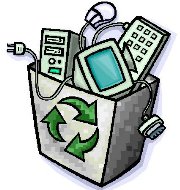India’s E-waste Generation: Key Facts from ASSOCHAM-NEC Study
A recent ASSOCHAM-NEC study on “Electricals & Electronics Manufacturing in India” has revealed that India recycles only 5% of its e-waste and the country is one of the biggest contributors of e-waste in the world.
E-waste of electronic waste refers to the electronic equipment being thrown away. It includes discarded computer monitors, motherboards, Cathode Ray Tubes (CRT), Printed Circuit Board (PCB), mobile phones and chargers, compact discs, headphones, white goods such as Liquid Crystal Displays (LCD)/ Plasma televisions, air conditioners, refrigerators and so on.
Key Points from ASSOCHAM-NEC study
According to the recent ASSOCHAM-NEC study:
- India generates around 2 million tonnes per annum (TPA) of E-waste of which 12% constituted of telecom equipment alone.
- Apart from India, the top e-waste generator countries are China, US, Japan and Germany.
- Among Indian states, largest quantity of E-waste is generated by Maharashtra (19.8% ), followed by Tamil Nadu (13%), Uttar Pradesh (10.1%), Karnataka (8.9%), Gujarat (8.8%) and Madhya Pradesh (7.6%).
- Out of the 2 million TPA e-waste generated, only 4.38 Lakh TPA is recycled in India.
- The low quantum of recycling of e-waste in India is due to lack of infrastructure, absence of strong legislative framework etc.
- The chemicals and pollutants generated by E-waste lead to environment and public health issues. Prolonged exposure to chemicals released by e-waste causes damage of nervous systems, blood systems, kidneys and brain development, respiratory disorders, skin disorders, bronchitis, lung cancer, heart, liver, and spleen damage.
E-waste is one of the major global concerns of the 21st century. As per Moore’s law, the transistor numbers to be accommodated in same size chip double every two years, and due to this most electronic systems get outdated in about three years. People upgrade their mobiles, laptops, cameras, televisions etc. creating a large amount of useless e-waste.
Month: Current Affairs - June, 2018


